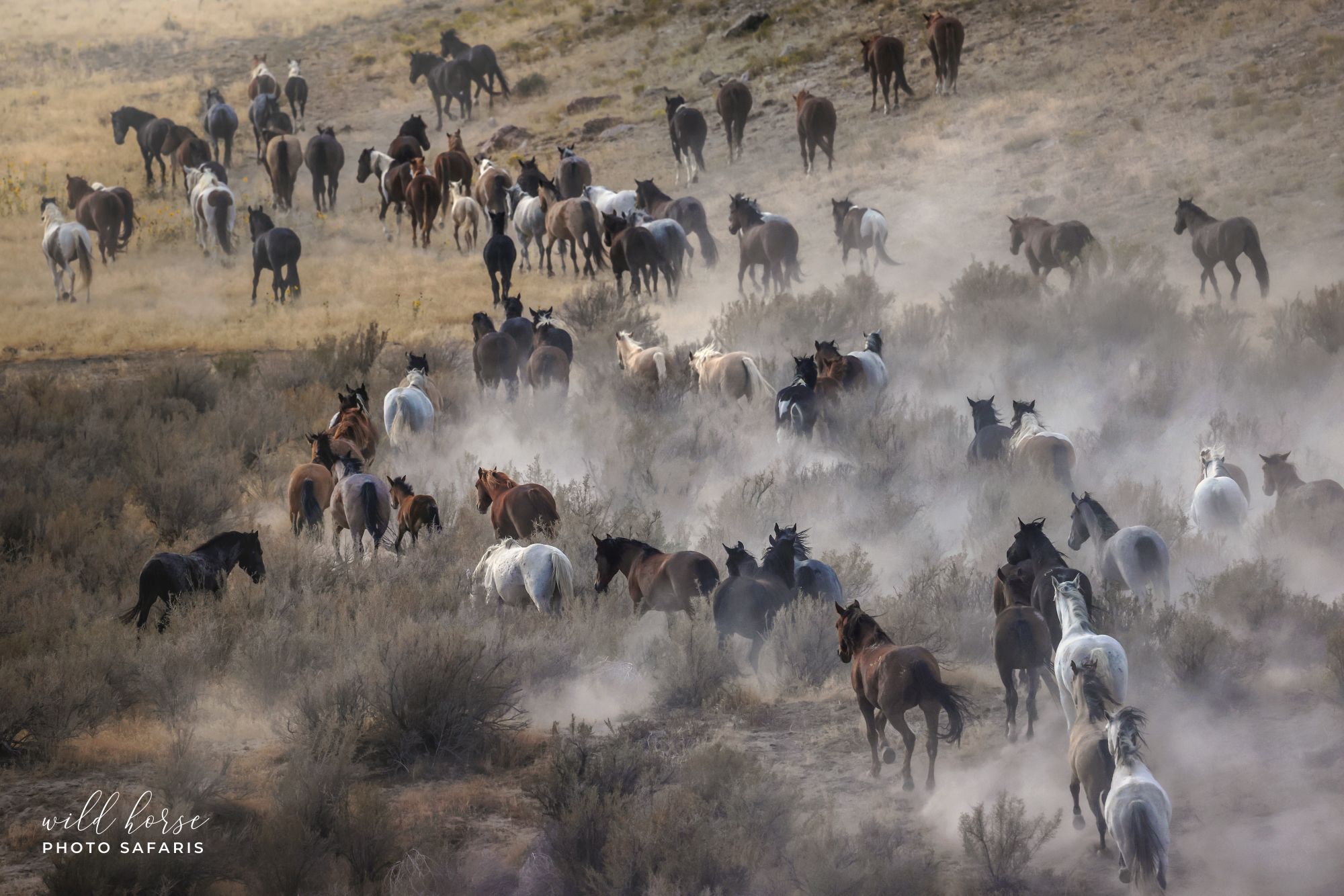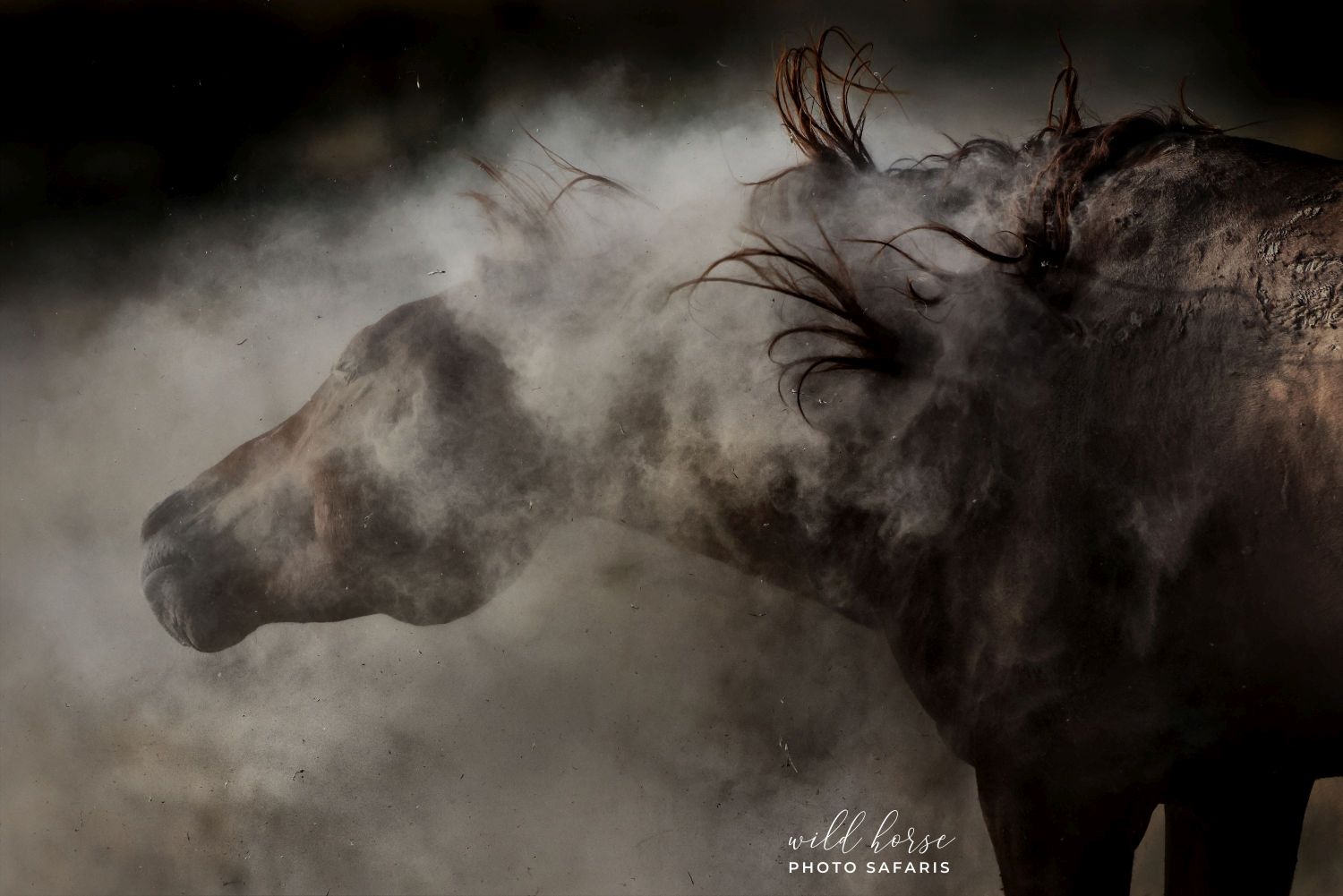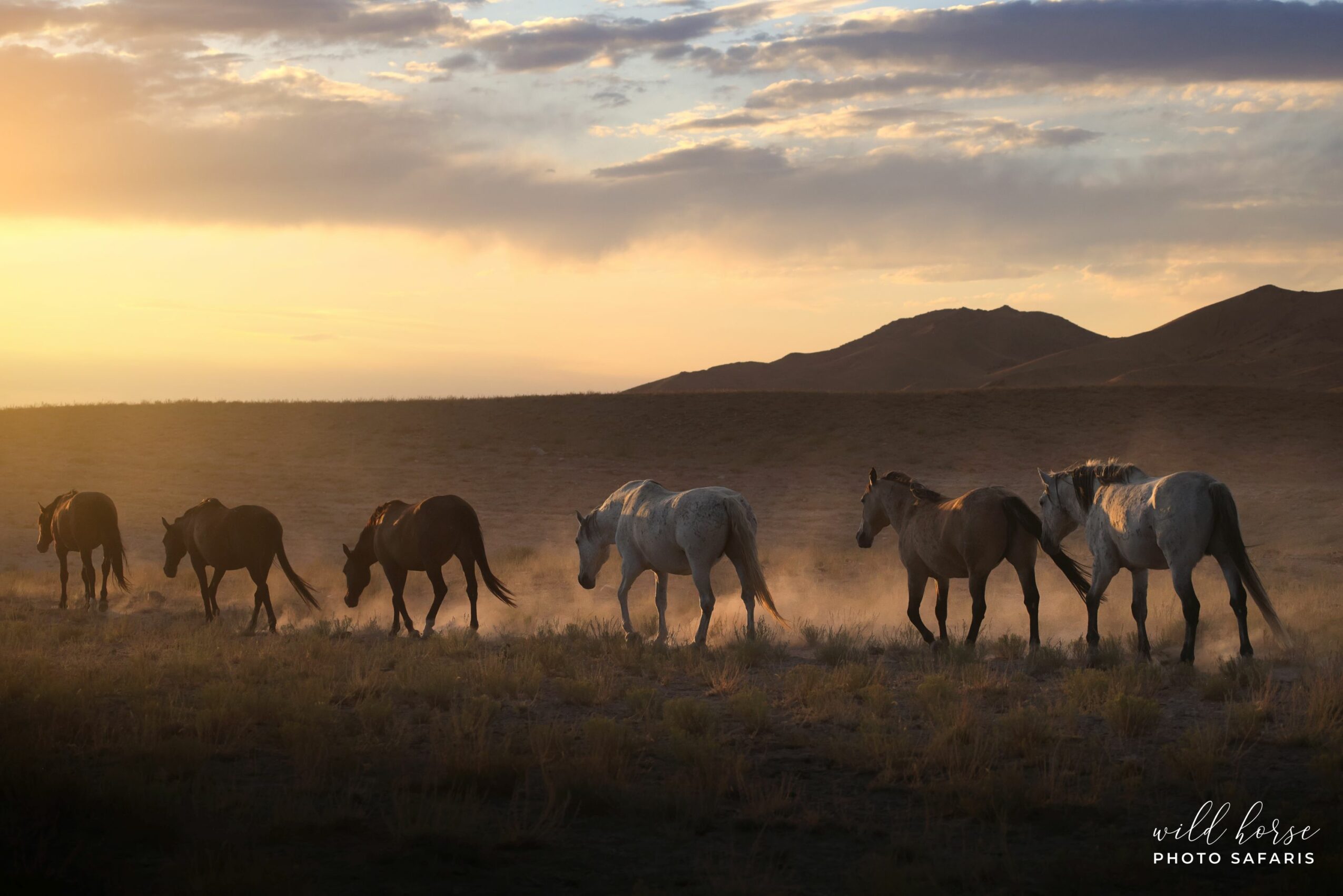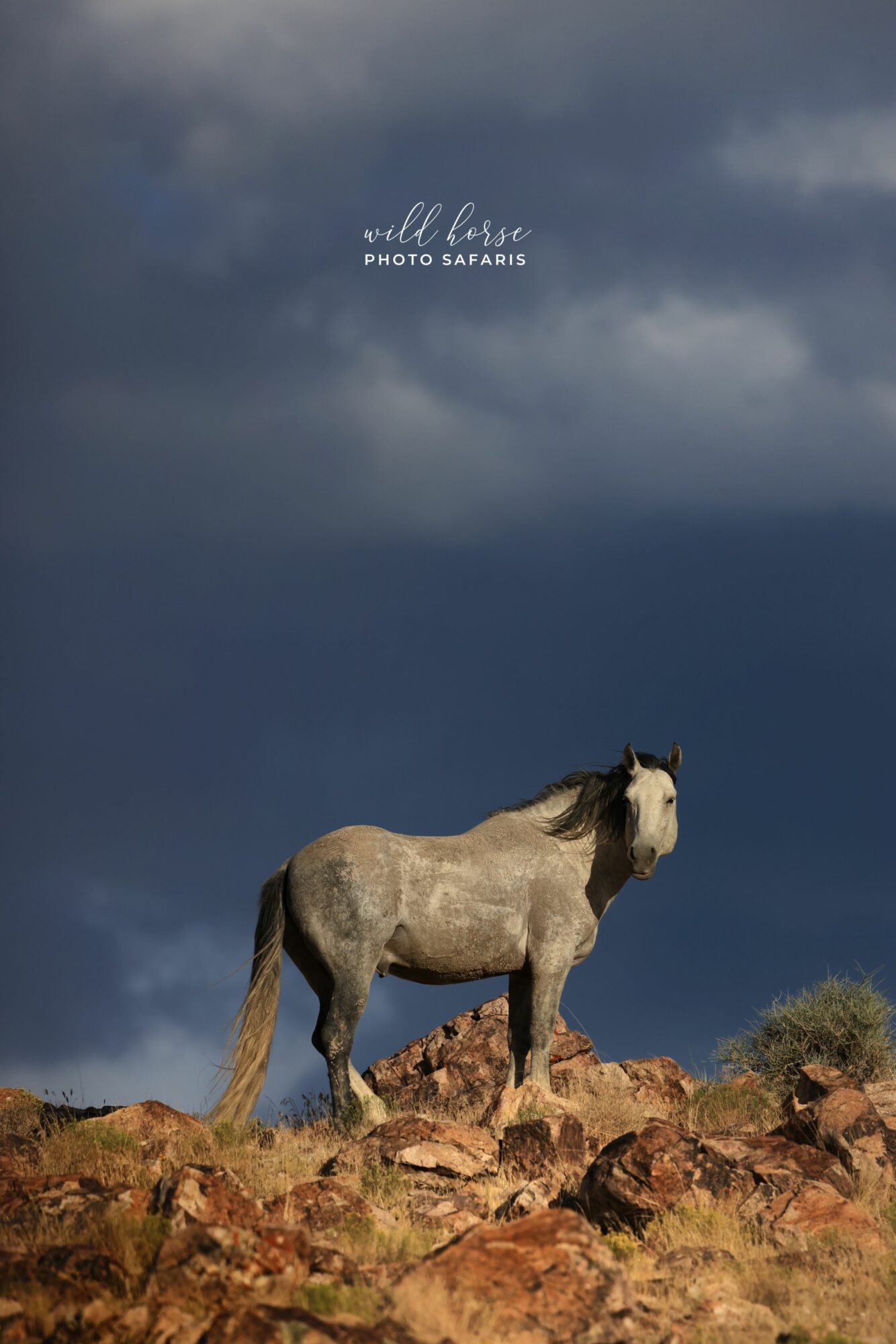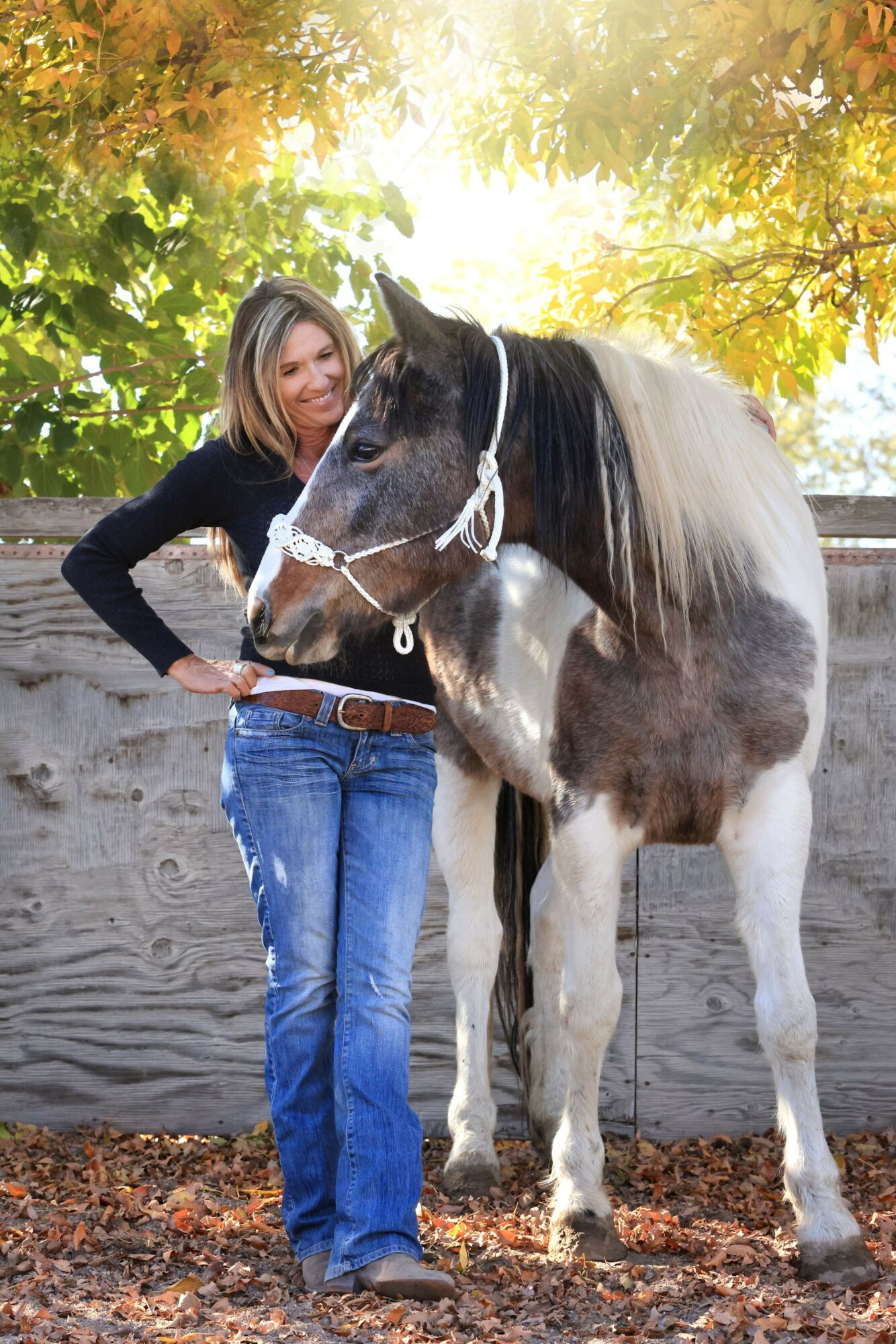

Today we’d like to introduce you to Jennifer Rogers.
Jennifer, we appreciate you taking the time to share your story with us today. Where does your story begin?
Back in 2020 shortly after coming to photograph the Onaqui wild horses for 10 days I made the life changing decision to leave my beloved home on Maui and try my hand at a very different kind of life here in Utah. I had been a professional photographer on Maui for the past 11 years and planned on restructuring my business to include wild horse photography photo tours and education. I didn’t know anyone in the area before taking the plunge, but in my gut it felt like the right decision so I set to work on packing and making it happen.
I began documenting the herd in detail as soon as I arrived and at this point have spent over 3,000 hours with the Onaqui since my arrival in 2020. I have been incredibly blessed to be able to introduce a piece of our American heritage in the West Desert to travelers from 13 countries and 39 states so far, many of which traveled all the way to Utah because of their interest in learning more about the Onaqui wild horses.
After only being in Utah for 3 months, the local Bureau of Land Management made the public announcement that they were scheduled to permanently remove 65% of the Onaqui wild horses in July in a helicopter roundup. I was devastated to hear this news and frantic to figure out a way to help and so I founded Redbirds Trust 501c3 (redbirdstrust.org) to help preserve and protect the Onaqui both on and off the range.
Through my non-profit I have hosted numerous range cleanups where over 15 miles of barbed wire fencing has been removed from their habitat on public lands, I have coordinated with other photographers to feature photographic updates & stories of our horses who were placed at sanctuaries throughout the United States after the ’21 removal, I assisted in placement of over 100 of the Onaqui through the BLM adoption event and have since stepped in to rescue and place 20 more Onaqui who found themselves in kill pens slated for slaughter, abusive/neglectful homes or left behind in various BLM holding facilities.
I also became a first-time mustang mom and adopted my first mare Cheyenne Grace from the Swasey herd, 11 months after I touched down in Utah. I found her in the Delta BLM holding facility after she was returned when her first placement failed her. With all her ribs showing, mane half chewed off and feet grown out way too long I made the leap of faith that she needed to come home with me. At that point I also knew two young Onaqui geldings from the same family band in the wild would also be coming home as soon as the adoption event was completed.
I had never owned a horse before, let alone trained one, but my three mustangs have progressed beautifully and I’ve worked with them at their pace to start Teton and Dreamcatcher under saddle and help Cheyenne Grace overcome a lot of trauma she had held onto from her first human experience.
We all face challenges, but looking back would you describe it as a relatively smooth road?
Starting a new business, especially in a new state, always has its challenges along the way one has to navigate. But when launching my Wild Horse Photo Safaris I could never have foreseen the emotional journey that would unfold, nor how entwined I would become with the plight of these horses. Owning horses was never on my “to do” list in a million years, but when my boys got taken from the rest of their wild horse family and the only land they knew to be home there was no way I could leave them behind. I loved them in the wild, and I love them even more now as our lives are forever entwined.
It has taken a tremendous amount of time to come to understand the dynamics of this special herd of horses. Utah is so blessed to have several herds of wild horses, but to have the Onaqui in particular who over the years have become tolerant of human presence allowing for people like me to come and photograph them, observe them in their daily lives and learn all about their families, patterns, communication and challenges.
When I first arrived trying to obtain information was difficult so through the years I’ve filled numerous books with handwritten daily notes documenting their lives, travel and changes in herd dynamics. All this documentation has been invaluable when helping adopters to understand more about the Onaqui they acquired after the ’21 removal but even more so it’s helped all my clients to fall in love with the wild ones during their time with me on the range.
There are now more wild horses kept in government holding facilities throughout the US than are left in the wild. With the future of many wild herds uncertain, I feel like it is critically important that I’m able not only to help clients have a memorable photographic experience, but to help educate them on the current plight of our mustangs and to understand their complex family dynamics and social bonds. They are truly very special and a natural resource to be cherished.
Thanks for sharing that. So, maybe next you can tell us a bit more about your work?
After spending 16 years in the corporate HR world, I transitioned over to starting my own photography business in Maui primarily focused on portraits and architectural design. While I currently continue to enjoy preserving special moments for families and couples via my portrait work, my main focus has shifted since coming to Utah to photographing and educating clients about our wild horses.
Being a locally based small business owner allows me to provide a personalized experience to each and every guest who comes on one of my private safaris or attends one of my workshops. Spending the last 5 years exclusively documenting the Onaqui wild horses lends to a deep knowledge base and understanding of these mustangs which I can then pass on to others.
After founding Redbirds Trust 501c3 it also added an element of giving back that is so important to me and it’s been wonderful to see familiar faces of past safari clients who come back again to volunteer on one of my range cleanup events to make the public lands safer for the horses and other wildlife who call it their home.
Do you have any advice for those looking to network or find a mentor?
My first inspiration for many subsequent volunteer trips as well as for starting my small Wild Horse Photo Safaris business to introduce others to the Onaqui wild horses started way back in 2011 after a week-long stay in the Elephant Nature Park located in Chiang Mai, Thailand. That was the first time I was able to see in real time the difference one person could make for the good of the animals and all of the valuable information I absorbed while I was there always stuck with me.
I tried to model my safari business in a way that would do the same for the wild horses – provide my guests with a personalized bucket list trip of a lifetime to see, photograph and learn about the Onaqui. When the removal was announced in 2021 I immediately began searching for other resources who had been involved in helping other herds of wild horses throughout the west including The Cloud Foundation, FOAL, Return to Freedom, Skydog Sanctuary (Clare Staples) and Wild Horse Education. These non-profit organizations have been around a long time and were able to provide advice and background statistics to assist me in my efforts.
Through Redbirds Trust 501c3 I also began networking with equine sanctuaries from coast to coast to find placement for the Onaqui that needed it most and fit the best with the structure of their programs. Some of the excellent sanctuaries I’ve networked with near and far include Engler Canyon Ranch, Lifesavers Wild Horse Rescue, Dreamchasers PMU, Mustang Journey, Paradise Dreams Animal Sanctuary, Grace Reins and Wild Heart Sanctuary. Without these sanctuaries so many horses wouldn’t have the wonderful lives they live today.
Contact Info:
- Website: https://www.wildhorsephotosafaris.com/
- Instagram: https://www.instagram.com/wildhorsephotosafaris/
- Facebook: https://www.facebook.com/wildhorsephotosafaris/
- Other: https://redbirdstrust.org/
